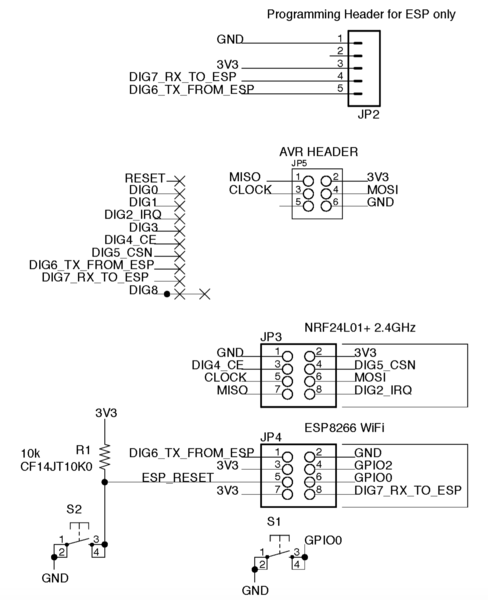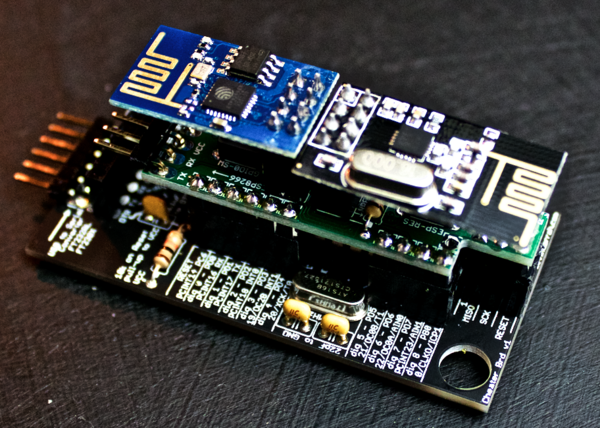Power Cheater
Introduction
The Power Cheater Board provides a simple Level Shifter between a standard USB-Serial Converter from 5V to 3.3V and also serves as a 3.3V linear power supply to the project board. It works nicely with the Cheater Board Power can be applied to the board from the USB-Serial Converter, Externally through the terminal block, or through aJST connector via a typical Lithium battery.
The inspiration to make this board came from the need for a cheap power supply for the ESP8266 WiFi Module with low quiescent current draw. This video here describes the power supply and benchmarks the regulators that are compatible with this board:
The MOSFET Level Shifters are Explained in this video:
Here's the schematic for reference:
Assembly
The board ships as a bare board like this:
The board can be assembled easily, since it only consists of through hole components, then it looks like this, then with the Radio Modules installed as mounted on the Cheater Board:
Parts
It is up to you to order the parts. The list can be downloaded **HERE**. This can be directly uploaded into Digikey if you'd like. The parts are pretty self explanatory - make sure that you pay attention to which way the Radio Modules plug into the board. There are markings/text on the board indicating which header each module should be used for.
Pin Out
ESP8266:
- TX from the ESP8266 goes to Arduino Pin 6 - pin 6 would be a Software Serial RX
- RX to the ESP8266 comes from Arduino Pin 7 - pin 7 would be a Software Serial TX
- GPIO 2 is not connected
- GPIO 0 is connected to one of the pushbuttons (under the ESP8266) pulled LOW when pressed - floating when not pressed
- RESET is connected to the other pushbutton (under the NRF24L01+) pulled LOW when pressed
NRF24L01+:
- IRQ is connected to Arduino Pin 2 - Interrupt 0
- CE is connected to Arduino Pin 4
- CSN is connected to Arduino Pin 5
- CLOCK is connected to Arduino Pin 13
- MOSI is connected to Arduino Pin 11
- MISO is connected to Arduino Pin 12
- Note that Arduino Pin 10 will not be useable, since the NRF24L01+ communicates via SPI, thus making the SS (Slave Select) pin not useable - there may be workarounds for this.
Test Code
Coming soon!




